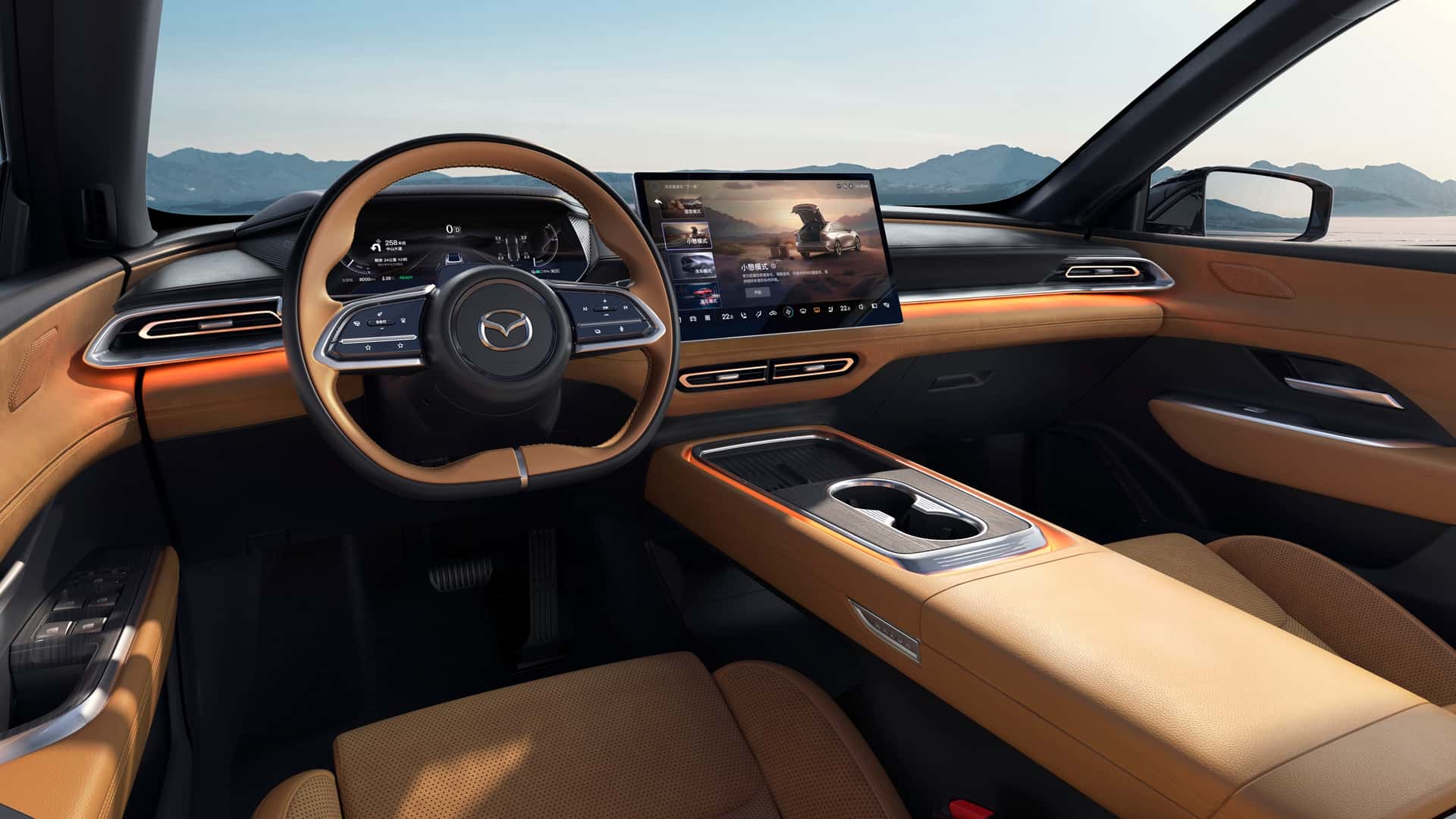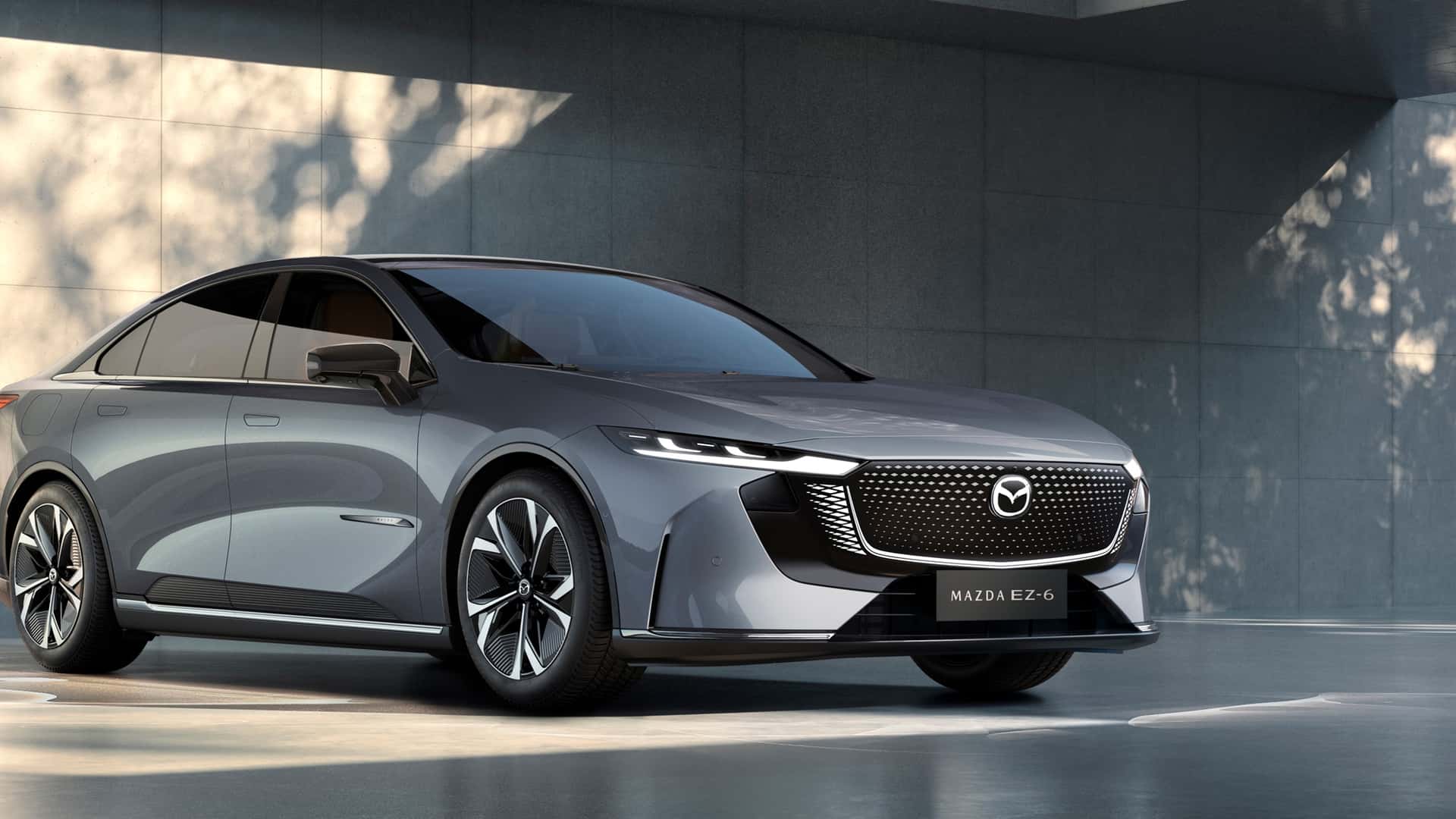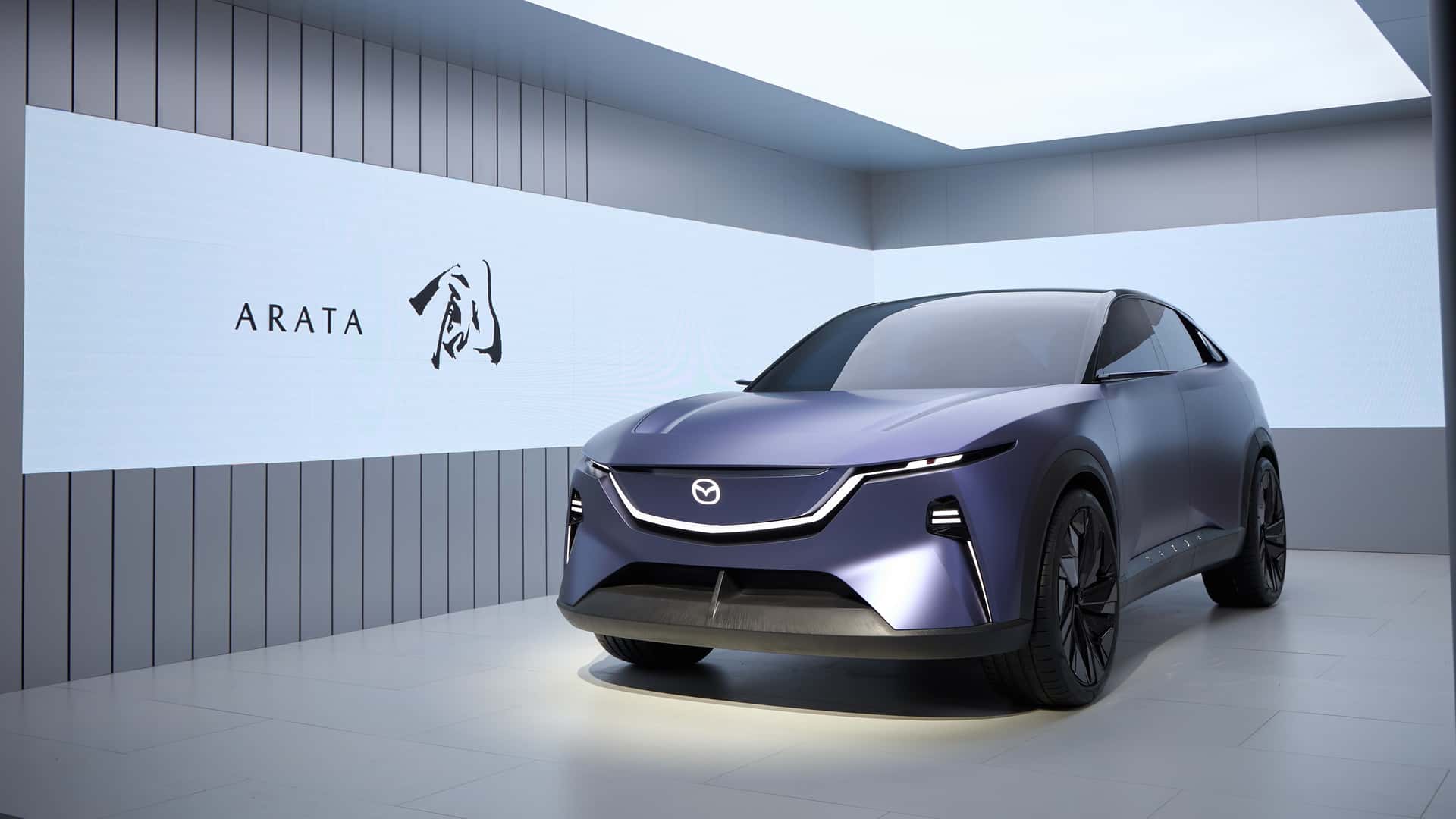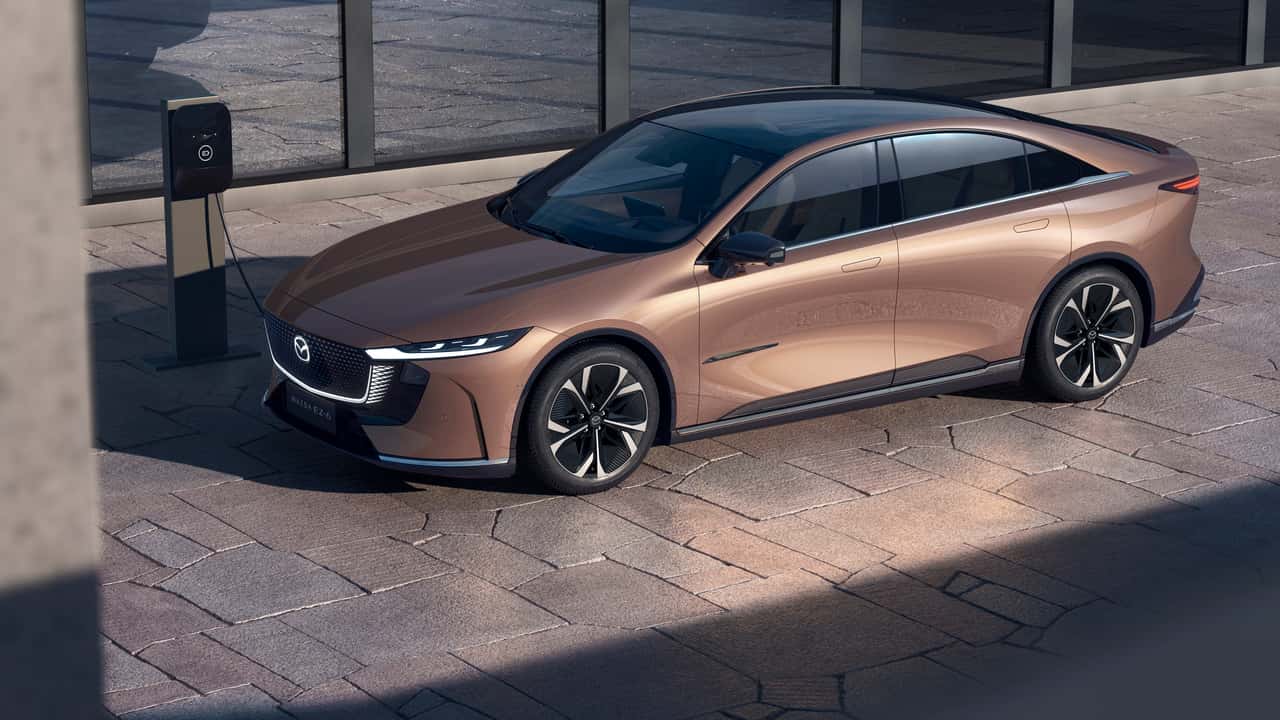- Mazda is among several Japanese carmakers slow to adopt electric cars.
- Thanks to a joint venture with China’s Changan Automobile, there’s a new Mazda EV in the pipeline called the EZ-6.
- It will go on sale in Europe and China this fall.
Mazda is one of the several Japanese automakers labeled as a “laggard” in the electric vehicle race. And for the past few years it has been in a crisis over its largely undefined EV plans.
The automaker, known for its sporty models like the MX-5 Miata and the famous rotary engines, barely has any presence in the U.S. EV market. The only two electrified models it sells are the CX-70 and CX-90 plug-in hybrids. Internationally, however, Mazda will soon offer the EZ-6 electric sedan.
Gallery: 2025 Mazda EZ-6








At an event in Japan today, along with its joint venture partner Chongquing Changan Automobile, Mazda said that the 2025 EZ-6 sedan would be its “first global new energy vehicle.” The concept was first showcased a few months ago at Auto China 2024. The production version will launch in China and Europe in the fall of this year.
This may excite Mazda’s fans stateside, but this model will be manufactured in China. So it’s highly unlikely that it will ever arrive in the U.S., given the stringent tariffs on imported Chinese-made cars. For Mazda, however, it’s good news. The model may help ease some pressure and possibly create a more enduring electrification journey going forward if buyers warm up to it.
The EZ-6 sedan is based on the Changan Deepal SL03. But it’s not a product of simple badge engineering. It’s a good looking car with classic Mazda flair. The rear-wheel-drive electric sedan has an old-school silhouette, mixing sharp angles with smooth curves. The front is highlighted by a sharp nose, sleek headlamps and a slender grille.

Inside, it looks upmarket as well. There’s a panoramic glass roof, floating center screen, digital gauge cluster, wireless chargers and a large and wide center tray.
Mazda hasn’t revealed powertrain and battery details yet, but it said previously that the all-electric version would have a range of 600 km (372 miles) whereas the hybrid model will cover an impressive 1,000 km (621 miles). It’s worth noting that these figures are on the overly optimistic China Light Duty Vehicle-Test Cycle (CLTC).
Changan’s model is offered as a range-extender, so it’s unclear if Mazda would also have its own version of that. What’s clear is that it will adopt Changan’s advanced driver assistance system (ADAS). The EZ-6 will come equipped with Level 2.5 driver assistance features with a robust hardware that includes a seven nanometer Qualcomm chip, four exterior HD cameras and 12 radars.
Gallery: Mazda Arata concept








Mazda also showcased the Arata electric SUV concept early this year. That would have probably made more sense for the U.S. given our appetite for SUVs. But it’s set to enter production by the end of next year in China, so the brand’s U.S. EV line-up will continue to look bare, at least in the near future.
It has the MX-30 range extender EV in its portfolio but that’s on sale only in Europe. InsideEVs reviewed that model early this year and found that it’s pleasant to drive, but has plenty of room for improvement.
Mazda, the Japanese automaker known for its innovative and stylish vehicles, recently announced the launch of its first all-electric vehicle, the Mazda MX-30. The company has touted this new electric vehicle (EV) as “truly global,” with plans to release it in markets around the world. However, there is one significant problem that Mazda must overcome in order to truly achieve global success with its new EV.
The primary issue facing Mazda’s MX-30 is its limited range. The vehicle has a modest 35.5kWh battery pack, which provides a range of approximately 100 miles on a single charge. While this may be sufficient for urban driving and short commutes, it falls short of the range offered by many other electric vehicles on the market today. In an era where range anxiety is a major concern for consumers considering switching to electric vehicles, Mazda’s limited range could be a significant barrier to adoption.
Furthermore, Mazda’s decision to use a smaller battery pack in the MX-30 may be a strategic miscalculation. With advancements in battery technology and the increasing availability of fast-charging infrastructure, many consumers are now expecting electric vehicles to offer longer ranges and faster charging times. By opting for a smaller battery pack, Mazda may have inadvertently undermined the market appeal of its new EV.
Despite these challenges, Mazda remains optimistic about the prospects for its new electric vehicle. The company has emphasized the MX-30’s sustainability credentials, with a focus on using environmentally-friendly materials and reducing the vehicle’s carbon footprint. Additionally, Mazda has highlighted the MX-30’s unique features, such as its freestyle doors and innovative interior design, which set it apart from other electric vehicles on the market.
In order to succeed in the competitive electric vehicle market, Mazda will need to address the issue of range and ensure that the MX-30 offers a compelling value proposition for consumers. This may involve investing in larger battery packs, improving charging infrastructure, and implementing marketing strategies to highlight the vehicle’s strengths. By addressing these challenges head-on, Mazda can position itself as a key player in the global EV market and achieve success with its new electric vehicle.

